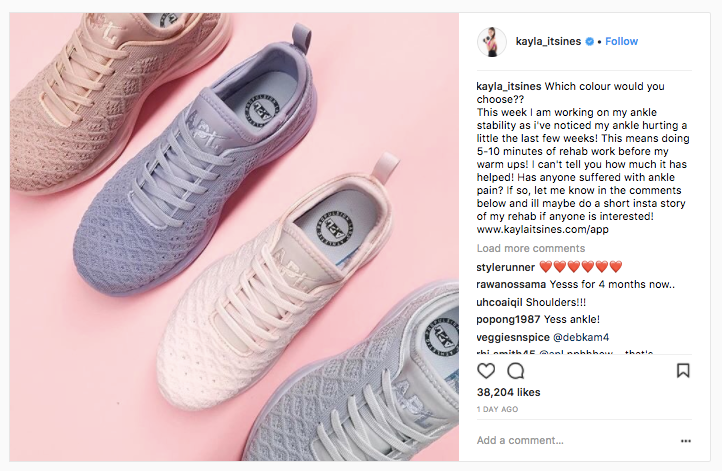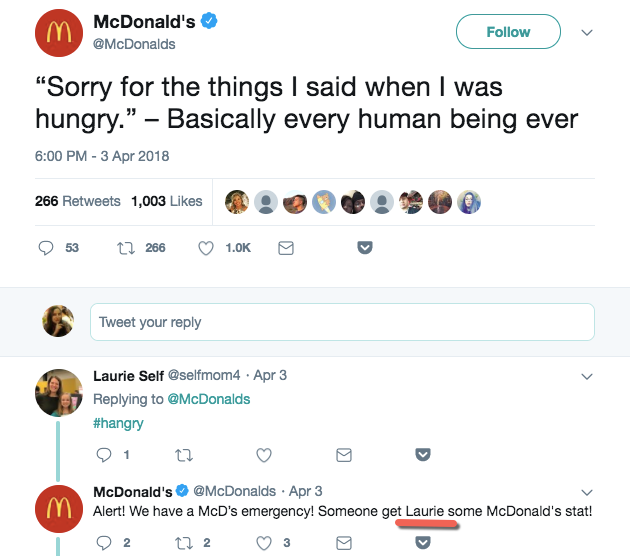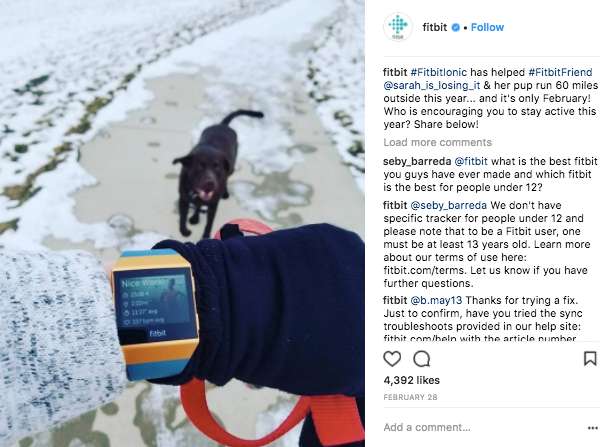Six effective social media engagement strategies to try today
Anyone can post on social media. But few brands know how to use platforms like Facebook, Twitter or Instagram to create meaningful interaction.
There’s more to a strong social media strategy than tweeting, ‘graming or feeding Facebook updates about products, services and educational content, and then hoping for the best. If that’s your approach, that might explain why you’re not making any noise on social media.
While sharing useful content and keeping your following up to date with what’s new with your business is great, it’s not enough to create engagement. So, what is?
Read on as we walk you through six effective strategies that can help boost your social media engagement.
But first…
What is social media engagement and why does it matter?
Social media engagement is like a long-term relationship. And you can only achieve that if you’re consistent in your efforts to communicate, inform, support, entertain and delight your audience.
When you’re dedicated to interacting with your customers, answering their questions quickly and offering custom solutions to their problems, you’re helping to build a relationship with your following where they’re engaged and happy to take the action you want them to take. That can be anything from liking, sharing or commenting on your posts, or checking into your location to entering your contests or writing a positive review for your business.
Why is social media engagement important? Because what’s the point in having 20,000 fans if whenever you post something it gets zero engagement? No likes, no comments, no shares, nothing. Yes, you have 20,000 fans, but if those fans aren’t engaged, they have zero value.
Engagement is very important for several reasons, including:
- It affects the visibility of your content because the more people that engage with your content (by liking, reacting, sharing or commenting on it) the more people get to see your posts in their newsfeed.
- It helps build customer confidence in your brand, considering that 83% of people trust recommendations from friends and family.
- It tells you how well your content resonates with your audience. This allows you to determine whether your audience is interested in the content you’re posting, or if you should change your strategy.
Now that you know the importance of engagement to your brands’ success on social media, let’s look at six ways to improve it.
Six ways to boost social media engagement
- Start the conversation
While creating great blog posts, videos and infographics and sharing them on your social channels is a good first step to engage your audience, it’s not enough. You can’t just post and sit back today, expecting your content to deliver massive engagement, without taking any further action.
Now, the first thing you should pay attention to is how you share your content and how you write that status update. You need to phrase that update in such a way that it not only catches people’s attention but also gets them talking.
So, instead of expecting all the love and engagement to come from a well written piece of content or a behind-the-scenes video that you share, you need to open the conversation yourself and entice your following to comment, share or react to your post.
How do you do that? By asking questions.
For instance, if you run a small catering business, asking people “What’s your favourite dish?” is a good place to start.
Here’s a simple example from London Review Bookshop where they share a list of must re-read books while also asking fans what’s on their re-read wishlist:

You can also ask for their opinion or advice, like in this example from personal trainer Kayla Itsines.

But an even better way to boost engagement is to ask a question that sparks a debate. For example, Domino’s Pizza asked their followers on Twitter whether they’d ban pineapple on pizza, one of the most common debates among pizza lovers.

The question helped generate engagement for the brand by not only pizza lovers but also festival goers and The Telegraph readers too. That’s because they cleverly linked their question to a news piece published in The Telegraph titled “Pineapple banned from Reading and Leeds music festival”.
That was a great move as they managed to take advantage of a trending piece of news which helped open their engagement reach to an even wider audience.
- Engage back and make them feel valued
In addition to asking questions, if your audience comments, asks a question or shares a counter opinion, make sure you write back and open a dialogue with your active followers. Engaging back can spark more conversation and can even drive up your post’s ranking so it gains more visibility in the news feed.
But don’t just respond to direct comments to your content. Also look for customer posts that mention your brand or use a specific hashtag related to your business or a campaign that you are running. Tools like Mention, Social Mention or TweetDeck make it easy to monitor mentions of your brand.
Why is this important? Because it shows that you’re paying attention and that you value your customers’ feedback and opinions.
Pro tip: You can go one step further and personalise each response by including names in your replies.
McDonald’s uses this tactic often on Twitter and it’s very effective:

Why use it? Because when you’re greeting customers with their name, it shows you’re making an effort to craft a custom response for each user. It also makes your business as well as the conversation feel friendlier. As a result, it connects and brings your brand and the customer closer together.
- Do a Q&A session
Getting a group together to converse on social media isn’t easy. So if you’re having trouble getting engagement from content, try hosting Facebook Live Q&As or Twitter Chats. Just make sure to join a few first to learn how they work.
You’ll find more information about Facebook Live and Twitter Chats in these guides:
Everything you need to know about Facebook Live and how it can help your business
Eight steps to hosting a successful Twitter chat for your business
- Promote your customers’ content
Another effective way to encourage conversation and engagement is to promote your customers’ content. For example, if you’re on Instagram, you could ask customers to @mention you or to use a hashtag that you’ve created for your brand, a product or a campaign.
For example, Fitbit uses its branded hashtags #FitbitIonic for their new product and #FitbitFriend to entice customers to share their own content and be part of the brand’s active community.

This is also known as user-generated content, and it’s a great way to get more exposure for your brand as well as to spark customer engagement.
Think about it: you’re not only making that customer feel great for being worthy to go on your feed, but chances are they’ll screenshot and share the evidence of your sharing their content.
So, make sure you take advantage. If you’re just getting started, you can try running a contest or a giveaway to encourage more customers to get involved and share content using your hashtags.
At the same time, don’t forget to monitor your hashtags and pay attention to what’s being said about your business on social media and see whether you can use a story, a review or a customer testimonial to build trust.
If you’re not familiar with hashtags, read our beginner’s guide to hashtags and how to use them for your business. In it, we explain what they are and how to use them to their full potential on networks like Twitter, Facebook, Pinterest and Instagram.
- Use videos
Users watch 100 million hours of video every day on Facebook. Twitter users are just as engaged by video, with 82% of them watching video.
Research and experience shows us repeatedly that posts that include visuals, especially videos, have much better engagement rates.
So, how can you use video to improve engagement on social media?
- Don’t limit yourself to how-to videos. There are so many types of video you can take advantage of to educate and entertain your audience, from expert interviews and FAQ videos to behind-the-scenes and testimonials. Read our post on eight types of videos you can create to engage your audience to learn more about each of them.
- Keep your videos short, between 30 seconds and two minutes.
- Create a catchy status update when sharing your video on social media to grab people’s attention and entice them to watch it.
- Include captions whenever possible because as much as 85% of Facebook videos are watched without sound.
- Post frequently and at optimal times
With so much content being published on social media, it’s a challenge to get your content noticed. So if you want to increase the chances of your followers seeing your content, make sure you share it at times when your audience is most likely active. This will also give you the best chance of generating engagement.
At the same time, make sure you post content and interact with your following regularly. If your audience thinks you’re inactive since your last update was from a week ago, then you’ll easily be forgotten or worse, unfollowed. Because what’s the point in following a brand that rarely has something interesting to say?
Bottom line: make sure you post content frequently and at optimal times to keep your audience updated and in-the-know. You can use tools like TweetDeck or Hootsuite to plan your social content ahead of time and schedule it to go live when you know your target audience is online.
Wrapping up
While sharing useful, relevant, entertaining content with your social media following is great, to boost engagement you need to be in constant dialogue with your audience. You need to make them feel like they have a genuine relationship with your brand, one that is fun and mutually beneficial.
You can’t achieve that with a single post or within the week. To boost engagement, you need to engage your audience every single day. Hopefully you’re up for the challenge and find success with the social media strategies in this post.
